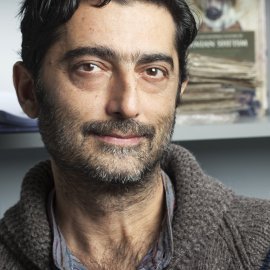Social anthropology, St Andrews University, Scotland, Unied Kingdom

d'octobre 2014 à juin 2015
Pedram KHOSRONEJAD is a Research Fellow in the Department of Social Anthropology at the University of St Andrews, Scotland and also associated member of Groupe Sociétés, Religions, Laicités (EPHE-CNRS, Paris). He obtained his PhD at the École des Hautes Études en Sciences Sociales (EHESS) in Paris. His research interests include cultural and social anthropology, the anthropology of death and dying, visual anthropology, visual piety, devotional artefacts and religious material culture, with a particular interest in Iran, Persianate societies and the Islamic world. He is the editor of several publications: The Art and Material Culture of Iranian Shi'ism: Iconography and Religious Devotion in Shi'i Islam (I.B.Tauris, 2011); Saints and their Pilgrims in Iran and Neighboring Countries (Sean Kingston, 2012); Iranian Sacred Defence Cinema: Religion, Martyrdom and National Identity (Sean Kingston, 2012); Unburied Memories: The Politics of Bodies, and the Material Culture of Sacred Defense Martyrs in Iran (Routledge, 2012). He is also chief editor of the Anthropology of the Contemporary Middle East and Central Eurasia (ACME).
Sacred defense, sacred bodies: ritualizing, visualizing and memorizing martyrdom in post-war Iran
During his fellowship at IAS-Nantes, Pedram KHOSRONEJAD aims to study the question of the martyr and of martyrdom in post-revolutionary Iran, especially within the context of the war between Iran and Iraq from the standpoint of socio-cultural and religious studies. We will identify the theological attitudes and social and cultural aspects of the ‘martyr’ as a conceptualization of the “self-object”, and we will also study the culture, materiality and visual representation of this concept in Iran. The psychoanalytical concept of the “self-object” refers to whatever is an object of attraction or love for the subject. This object is often a person, but can also be an inanimate item, a symbol, or an idea. In this project we will work on the ‘martyr’ and ‘martyrdom’ as a “self-object” of significant “cathexis” for the Iranian masses.